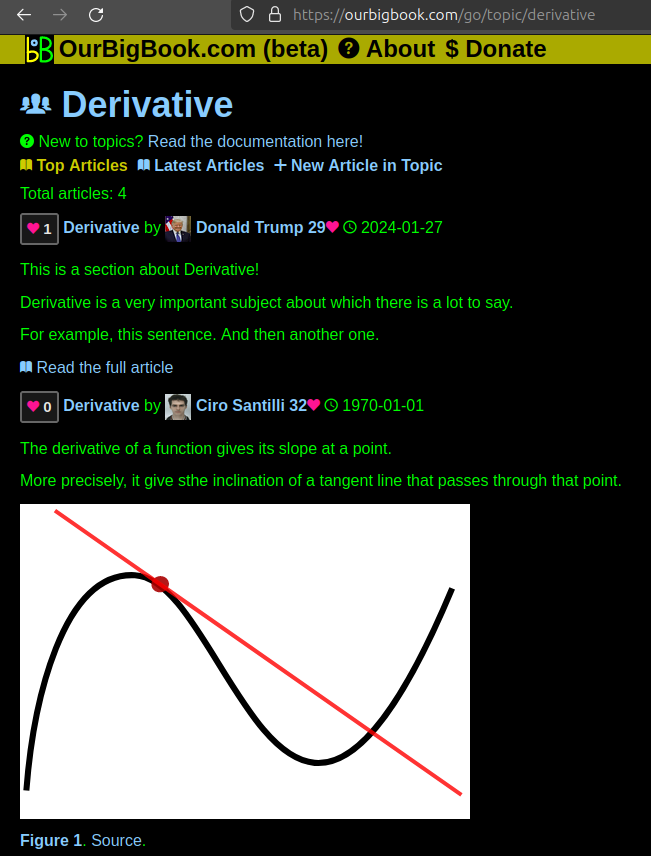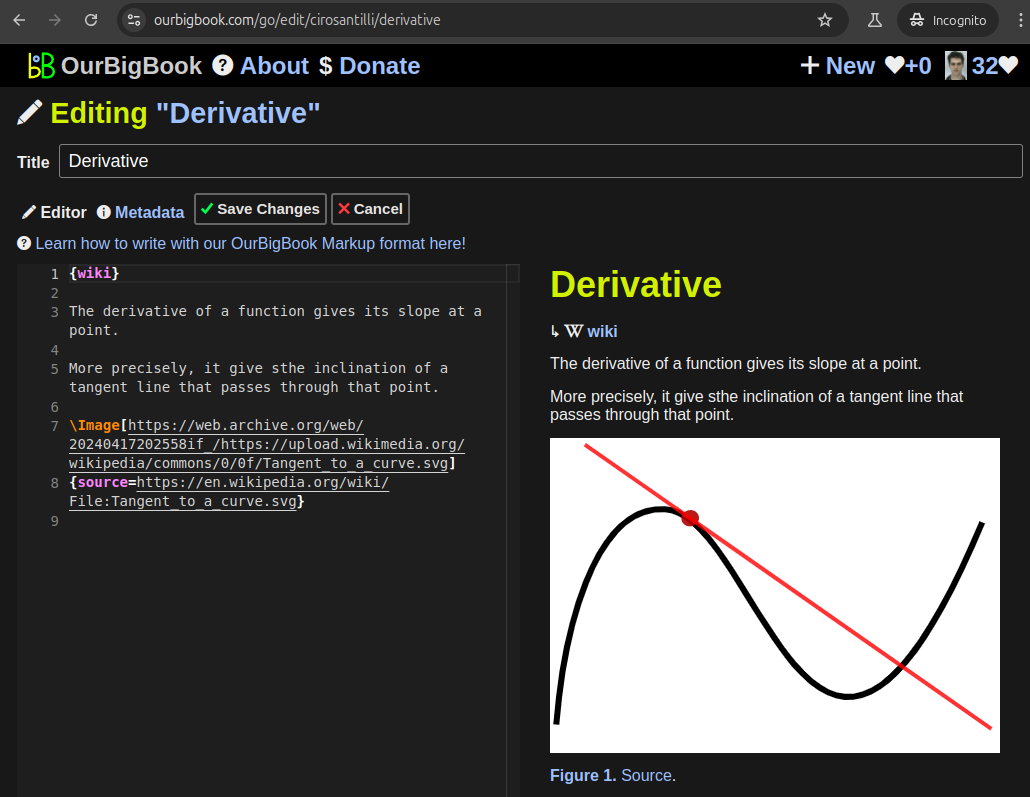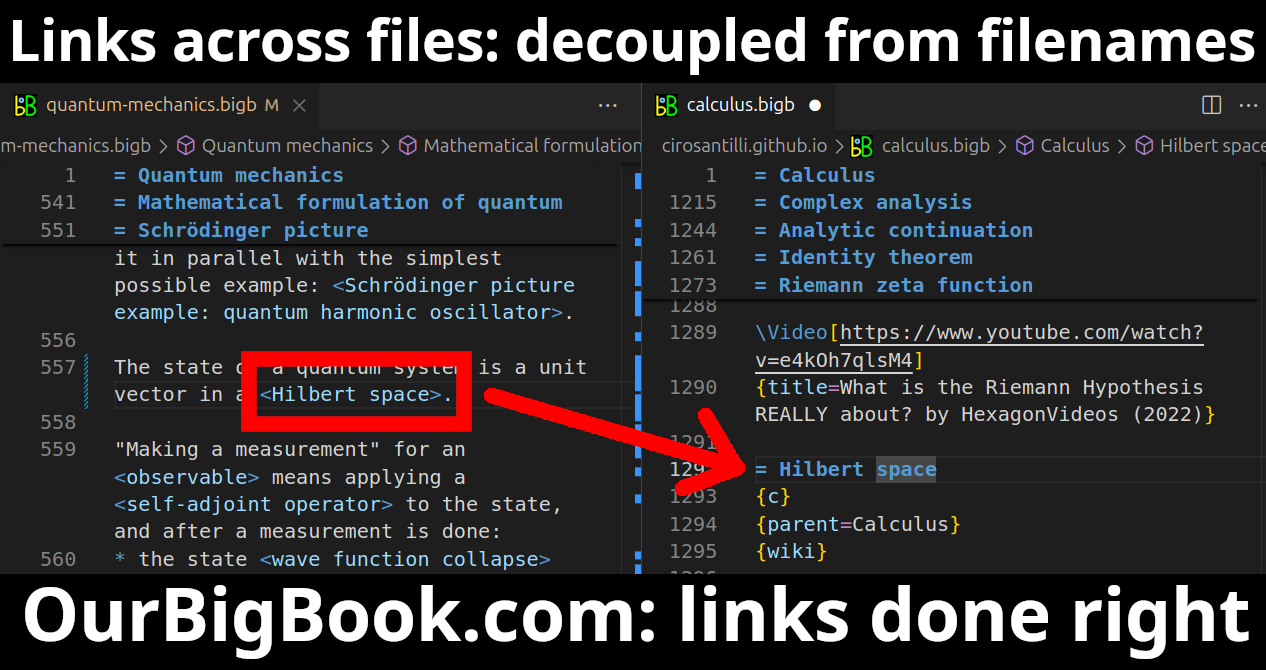Given a function :we want to find the points of the domain of where the value of is smaller (for minima, or larger for maxima) than all other points in some neighbourhood of .
- from some space. For beginners the real numbers but more generally topological spaces should work in general
- to the real numbers
In the case of Functionals, this problem is treated under the theory of the calculus of variations.
This notation is not so common in basic mathematics, but it is so incredibly convenient, especially with Einstein notation as shown at Section "Einstein notation for partial derivatives":
This notation is similar to partial label partial derivative notation, but it uses indices instead of labels such as , , etc.
The easy and less generic integral. The harder one is the Lebesgue integral.
Advantages over Riemann:
- Lebesgue integral of is complete but Riemann isn't.
- youtu.be/PGPZ0P1PJfw?t=710 you are able to switch the order of integrals and limits of function sequences on non-uniform convergence. TODO why do we care? This is linked to the Fourier series of course, but concrete example?
youtube.com/watch?v=PGPZ0P1PJfw&t=808 shows how Lebesgue can be visualized as a partition of the function range instead of domain, and then you just have to be able to measure the size of pre-images.
One advantage of that is that the range is always one dimensional.
But the main advantage is that having infinitely many discontinuities does not matter.
Infinitely many discontinuities can make the Riemann partitioning diverge.
But in Lebesgue, you are instead measuring the size of preimage, and to fit infinitely many discontinuities in a finite domain, the size of this preimage is going to be zero.
Which is why we then fall into measure theory!
In "practice" it is likely "useless", because the functions that it can integrate that Riemann can't are just too funky to appear in practice :-)
Its value is much more indirect and subtle, as in "it serves as a solid basis of quantum mechanics" due to the definition of Hilbert spaces.
Pinned article: Introduction to the OurBigBook Project
Welcome to the OurBigBook Project! Our goal is to create the perfect publishing platform for STEM subjects, and get university-level students to write the best free STEM tutorials ever.
Everyone is welcome to create an account and play with the site: ourbigbook.com/go/register. We belive that students themselves can write amazing tutorials, but teachers are welcome too. You can write about anything you want, it doesn't have to be STEM or even educational. Silly test content is very welcome and you won't be penalized in any way. Just keep it legal!
Intro to OurBigBook
. Source. We have two killer features:
- topics: topics group articles by different users with the same title, e.g. here is the topic for the "Fundamental Theorem of Calculus" ourbigbook.com/go/topic/fundamental-theorem-of-calculusArticles of different users are sorted by upvote within each article page. This feature is a bit like:
- a Wikipedia where each user can have their own version of each article
- a Q&A website like Stack Overflow, where multiple people can give their views on a given topic, and the best ones are sorted by upvote. Except you don't need to wait for someone to ask first, and any topic goes, no matter how narrow or broad
This feature makes it possible for readers to find better explanations of any topic created by other writers. And it allows writers to create an explanation in a place that readers might actually find it.Figure 1. Screenshot of the "Derivative" topic page. View it live at: ourbigbook.com/go/topic/derivativeVideo 2. OurBigBook Web topics demo. Source. - local editing: you can store all your personal knowledge base content locally in a plaintext markup format that can be edited locally and published either:This way you can be sure that even if OurBigBook.com were to go down one day (which we have no plans to do as it is quite cheap to host!), your content will still be perfectly readable as a static site.
- to OurBigBook.com to get awesome multi-user features like topics and likes
- as HTML files to a static website, which you can host yourself for free on many external providers like GitHub Pages, and remain in full control
Figure 3. Visual Studio Code extension installation.Figure 4. Visual Studio Code extension tree navigation.Figure 5. Web editor. You can also edit articles on the Web editor without installing anything locally.Video 3. Edit locally and publish demo. Source. This shows editing OurBigBook Markup and publishing it using the Visual Studio Code extension.Video 4. OurBigBook Visual Studio Code extension editing and navigation demo. Source. - Infinitely deep tables of contents:
All our software is open source and hosted at: github.com/ourbigbook/ourbigbook
Further documentation can be found at: docs.ourbigbook.com
Feel free to reach our to us for any help or suggestions: docs.ourbigbook.com/#contact





